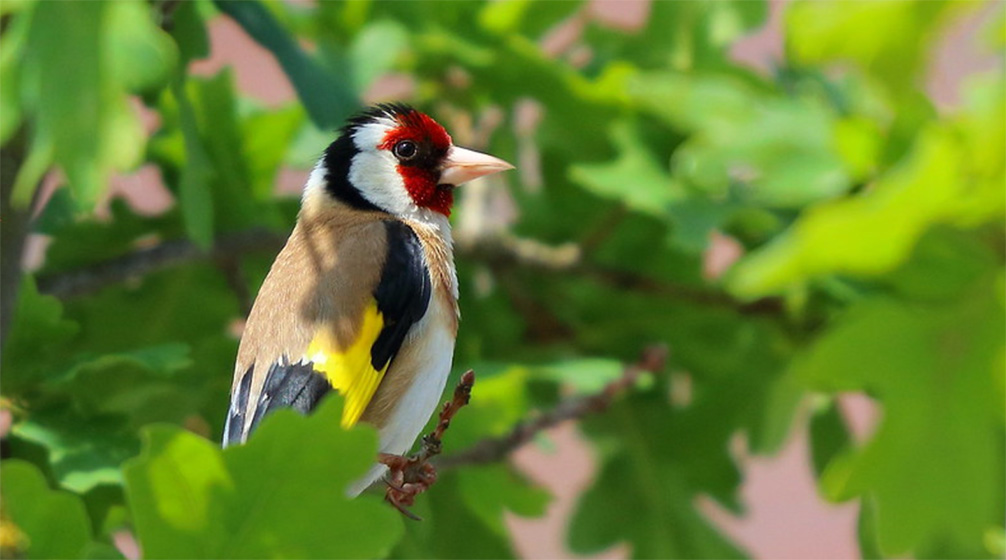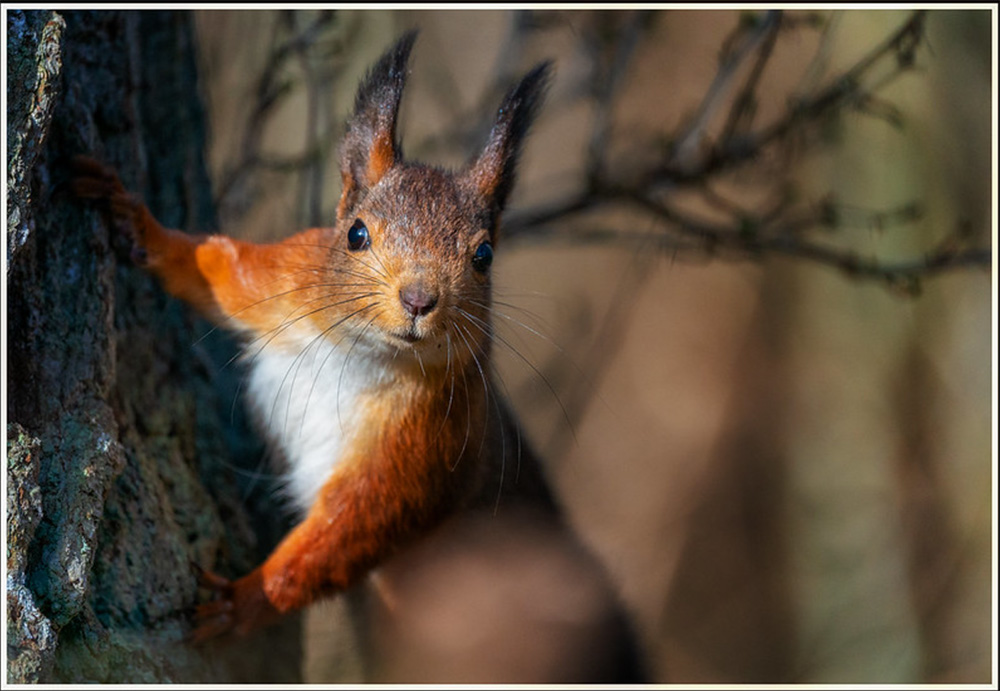If you’re looking for the best wildlife lenses for Sony a6000, we’ve got your back. Sony a6000 is a great choice for birds and wildlife photography.
It’s lightweight and compact, but it also packs enough of a punch to take great photos. Plus, its APS-C-sized sensor gives you extra reach when working with telephoto lenses—and this is where many wildlife photographers find themselves needing more glass power than the standard kit lens offers.
There are many different types of wildlife photography lenses for sony a6000 available on the market today and choosing the right one can be difficult.
This guide will show you what to look for in your next lens so that you can get great shots every time.
Here are our 5 Best Wildlife Photography Lenses for Sony a6000:
1. Sony Alpha 70-350mm F/4.5-6.3 G OSS Super-Telephoto APS-C Lens

The Sony E 70-350mm is our top pick lens for APS-C cameras because this lens is perfect for beginners to experienced wildlife photographers that want to get the most out of their wildlife photography.
This lens has a great performance-to-price ratio, lightweight, and is easy to carry. It also has a good range from 70mm-350m (105-525mm full-frame equivalent) which means that you can capture closer and more distant shots.
It’s also great for taking pictures of birds, but it also works well with other animals as well.
The autofocus is quite fast and accurate, which is very critical when taking photos of wild animals.
The focusing mechanism is also very silent which can be very useful when trying to take pictures of wild animals in their natural habitat.
Also during our tests, I find that the Sony 70-350mm autofocus system is behind its bigger and more expensive brothers like the Sony FE 200-600mm and Sony FE 100-400mm F4.5–5.6 GM OSS.
Nevertheless, the Sony E 70-350mm AF performance is fast enough for its price to capture most of the action.

Being more lightweight than most super zoom lenses, the Sony 70-350mm is very easy to carry. It’s also quite compact which makes it easier to travel with.
A combination of Sony a6000 and this lens can bring you to many places without being a burden. Also, you can shoot handheld without any issues.
The image stabilization works great and helps you a lot when shooting at long focal lengths.
The Sony 70-350mm lens has a decent build quality for its price tag.
The lens has a solid build and feels great when handled. It’s made of high-quality plastics that don’t feel cheap and looks like it can withstand some abuse. However, it is not weather-sealed. It only has a dust and moisture resistance design that will help you in certain situations, but not all.
Also, it’s very easy to use and has a comfortable grip which makes it enjoyable even for long hours of shooting.
Now, this lens has great sharpness and details overall. You can see the details on the bird and its feathers clearly even at its maximum zoom range.
The colors are quite accurate and pleasant to the eyes. Colors are not extremely vivid and not muted, just about the right amount of contrast and saturation.
Pros:
- Very good details and sharpness even wide open
- Lightweight and easy to carry
- Reasonable price
- Great for beginners and amateur wildlife photographers
Cons:
- AF is slower compared to more expensive Sony zoom lenses
- Slower max aperture
2. Sigma 100-400mm F5-6.3 DGDN OS Contemporary

The Sigma 100-400mm F5-6.3 DGDN OS is a great choice if you don’t want to spend around $2,000 for a Sony FE 100-400mm f4.5-5.6 GM.
It has a quick autofocus, which is crucial when you’re trying to capture fast-moving subjects like birds or other animals in the wild.
The AF tracking works really well and we’re able to track birds in flight accurately. Against our top pick the Sony 70-350mm, the Sigma 100-400mm is heavier and longer, but we didn’t find that too much of a problem.
It is not that heavy and we have no problem shooting handheld with it for a whole day at the zoo.
Also, the Sigma has a longer reach in its short end and has a faster maximum aperture than the Sony 70-350mm.
The only reason we didn’t have this amazing lens as our top pick is because native lenses perform better than 3rd-party lenses when paired with an APS-C body like the Sony a6000.
Plus, AF seems much faster and more accurate with native lenses. If you’re using a full-frame mirrorless camera like the Sony A7 series, then this lens would be the best option for you as it’s much more capable in most situations and has a reasonably fast AF system.
The image quality produced by the Sigma 100-400mm F5-6.3 DGDN OS Contemporary is fantastic. You’ll be able to get sharp photos with plenty of details at all focal lengths and distances from your subject, even at 400mm.

Its image stabilization is comparable to Sony’s 70-350mm lens which means it’s very effective and will let you shoot handheld images at a reasonably lower shutter speed.
This lens has a max zoom range of 100-400mm, which means it can go as wide as 100mm and as close as 400mm without having to switch lenses while out in the field.
This gives you plenty of flexibility when composing your subjects.
But keep in mind that if you want more reach than 400mm(mostly for photographing high-flying birds) then this might not be the right choice for you because there are other options available on our list that give more reach than this one does (like the Sigma 150-600mm F5/-6.3 DG DN)
Overall, this lens has a great performance for APS-C cameras like the Sony a6000 series but it performs way better when used with full-frame mirrorless cameras.
If you’re planning to upgrade soon to a Sony A7 series camera, the Sigma 100-400mm F5-6.3 DGDN OS Contemporary is a wise choice.
Pros
- Very sharp outputs
- Precise AF tracking
Cons:
- Not fully weather-sealed
3. Sony E 55-210mm F4.5-6.3 Lens

The Sony E 55-210mm F4.5-6.3 Lens is a fairly decent wildlife photography lens and it’s especially great for new photographers. It has a compact design that makes it easy to carry around, and it’s lightweight enough to be used for long periods of time.
It also has a quick autofocus system, which means you can get shots of moving animals without missing the moment. The autofocus motor is also reasonably quiet, which makes it ideal for wildlife photography where you don’t want to disturb animals with a loud focusing mechanism.
Its image quality is pretty good across its zoom range—not quite as sharp as other more expensive lenses, but still impressive for an inexpensive zoom. Photos have plenty of details and have good contrast overall.
The Sony E 55-210mm F4.5-6.3 overall size is smaller and lighter than the Sony 70-350mm but the build quality of both is quite good. The lens feels solid in your hand and the zoom ring is smooth to operate.

Its image stabilization works really well which makes it easy to get sharp photos without a tripod in most situations.
Sony’s zoom range of 55-210mm is incredibly useful for wildlife photography, especially for those who want to be able to capture both close-up shots of small birds and distant shots of large animals.
Overall, this affordable lens is great for newer photographers who are just getting started with wildlife photography. It’s also a great option for anyone who wants to pack light and try out zoom lenses without spending too much money.
Pros:
- Image quality is quite good
- Decent reach
- Small and light for a wildlife lens
Cons:
- Not suitable for paid gigs
- A decent lens but not great
4. Sony FE 200-600mm F5.6-6.3 G OSS Super Telephoto Zoom Lens

If you have the money to splurge for an excellent zoom lens, the Sony FE 200-600mm F5.6-6.3 G OSS may satisfy your needs.
At the time of writing this review, it’s one of the most expensive flagship zoom lenses in Sony’s line-up, but it offers outstanding image quality, an incredible AF performance, and a great focal range for wildlife photography.
This lens is also great if you’re upgrading your Sony a6000 to a Sony full-frame camera. This lens is highly recommended if you have the budget and already have or planning to get a Sony full-frame camera.
Now, since we have a small APS-C Sony a6000, the reach of this lens is even better. This amazing telephoto zoom lens becomes 350-900mm, great for safari adventures!

Of course, it will be so unbalanced when used with the Sony a6000, so getting a sturdy tripod is a must. However, there’s no problem using it purely handheld but it’s a really heavy lens at around 4.66 lbs.
Everything about this lens is outstanding. Autofocus is blazing fast, tracking works really well, high-quality images, sharpness, details, and build quality are all amazing. It is definitely worth your money.
But it comes with a hefty price tag. And this lens is ideal for experienced and professional wildlife photographers who want the best quality and performance for their photography.
Nevertheless, for us Sony a6000 and APS-C camera users, the Sony 70-350mm is more than enough for our needs.
Pros:
- Outstanding build quality
- High-performance lens
- Ultra-fast focusing
Cons:
- Heavy
- Expensive
5. Tamron 70-300mm F/4.5-6.3 Di III RXD

Next on our list is this great 3rd-party telephoto zoom lens from Tamron. The Tamron 70-300mm F/4.5-6.3 Di III RXD is a lightweight telephoto zoom lens that’s gaining some popularity among Sony a6000 and full-frame camera users because of its impressive performance, compact size, and affordable price tag.
The lens has a variable maximum aperture of 4.5-6.3, which is a very good range for a telephoto zoom lens.
This affordable lens is a great option for beginners and amateur photographers who are looking for a light and compact telephoto zoom lens that performs well without breaking the bank.
The lens is not weather-sealed and neither has image stabilization.
But seriously, its flaws can be easily forgiven because this glass’s outputs are sharp, and photos have plenty of details and punchy colors.

Its AF performance is quite good as well. It tracks my subject reasonably fast, and focusing is quite accurate.
And because of its weight, shooting handheld with it all day long isn’t going to be a huge problem. Now, its build quality is superb although not weather-sealed, but it does feel really solid and durable.
All in all, if you’re looking for an affordable zoom lens for wildlife and don’t mind not having an IS, this lens is a great option.
At just a fraction of the cost of Sony, Zeiss, and Sigma lenses, the Tamron 70-300mm F/4.5-6.3 Di III RXD is a great choice for beginners and even experienced shooters who are looking for a budget lens that can get the job done.
Pros:
- Quick and snappy AF
- Superb image quality
Cons:
- Doesn’t have image stabilization
Things To Consider When Choosing A Lens For Wildlife Photography

Buying a lens for wildlife photography is a big decision, and it’s important to consider all of the options before making your final choice. Here are some things to keep in mind when choosing a lens:
Your Budget
How much do you want to spend on a lens? If you’re just starting out, it might be a good idea to buy a cheaper lens that can get the job done.
However, if you already have some experience with wildlife photography and want to step up your game, then go ahead and splurge on a more expensive lens.
The best wildlife photography lens doesn’t have to be the most expensive lens on the market. In fact, there are a lot of great options out there that won’t break your bank account.
But if you’re looking for only the very best in quality and performance, then you’ll need to spend more money on a Sony flagship lens.
Focal Length and Zoom Range
A good wildlife lens is one that’s versatile and can be used at different focal lengths. One of the most important factors to consider when buying a lens is the zoom range. In other words, how much magnification do you need?
For example, if you’re just starting out and want a lens that can get close-up shots of your subject, then it might be better to go with something like a 70-300mm telephoto lens.
However, if you’re always shooting distant subjects, consider a lens with a higher zoom range.
Longer zoom ranges are usually better because they allow you to photograph birds and other wild animals from far away without disturbing them.

Autofocus
Autofocus is another important feature to look for in a lens. When you’re shooting fast-moving subjects like birds and other wildlife, it’s essential that your camera can keep up with their movements.
Autofocus will also allow you to take pictures of birds at different distances without having to constantly adjust the focus manually.
Usually, the Sony flagship lenses like the Sony FE 100-500 and Sony FE 200-600mm have outstanding AF and tracking performance. But their cheaper little brothers can also get the job done albeit a bit slower.
Stabilization
A lot of people don’t realize that stabilization is just as important for wildlife photography. When you’re shooting with a long lens, even the slightest movement can cause your subject to be blurry in your photo.
If you’re taking pictures at 500mm or 600mm, even a tiny little gust of wind could ruin an otherwise perfect shot.
Planning to go full-frame in the foreseeable future?
There are telephoto zoom lenses that are specifically made for APS-C cameras like the Sony a6000 but when they are used on a full-frame camera like the Sony a7R III, they will not have the same coverage.
So if you’re thinking of upgrading to a full-frame camera in the near future, you should probably get a wildlife photography lens like the Sony FE 200-600 which is made for full-frame cameras. It is actually cheaper in the long run.
FAQ
Is Sony a6000 good for wildlife photography?
Yes, the Sony a6000 is an excellent camera for wildlife photography. It has a high-resolution 24MP sensor and an impressive autofocus system that can track moving objects. Its smaller sensor is really useful for making telephoto zoom lenses even longer.
Is Sony a6000 good for birding?
Yes, the Sony a6000 is a great camera for birding. Its AF tracking works well with birds. Its small size and weight make it easy to carry around all day, and its fast autofocus system makes it easy to capture birds in flight.
Is full frame better for wildlife photography?
Yes and No!
It really depends on what type of wildlife photography you’re doing. If you’re trying to capture birds in flight or other fast-moving subjects from a distance, then a full-frame sensor may not be necessary.
Because of their smaller sensors, APS-C cameras can magnify your lenses even more allowing you to have more reach without losing details and quality.
However, if you’re a pro and shooting paid gigs, a full-frame camera will definitely help you to take photographs more easily because of its faster AF system and outstanding image quality.
Is a 200mm lens enough for wildlife?
The answer depends on what type of wildlife you’re trying to photograph. If you have a bird in flight, then yes it should be fine.
However, if you’re trying to capture something like a bear or deer from far away, then probably not!
For those types of subjects, you’ll need at least a 400mm to 600mm lens to have a good chance of getting a decent shot. If you’re shooting wildlife for fun and not making any money from it, then 200mm should be plenty.

Emma Lucy is the Founder & CEO of Emma Lucy Photography. She has over a decade of experience shooting weddings and other intimate events. She also tests the latest digital camera bodies, lenses, analog cameras, and other gear from Canon, Nikon, Sony, and other camera brands. She is From London and currently lives in the United States of America, where she spends most of her time as a self-employed professional photographer and writer.
